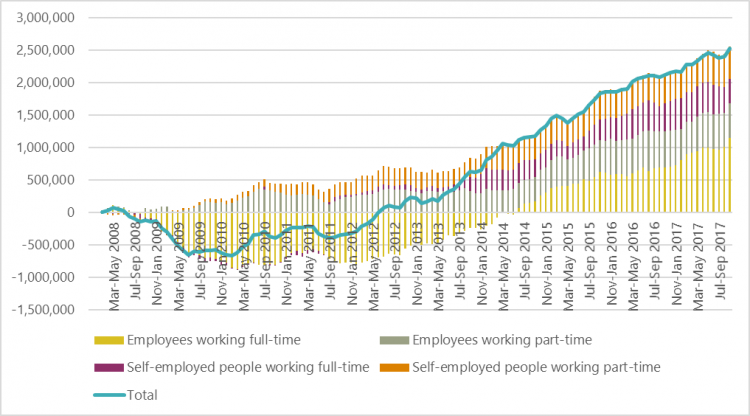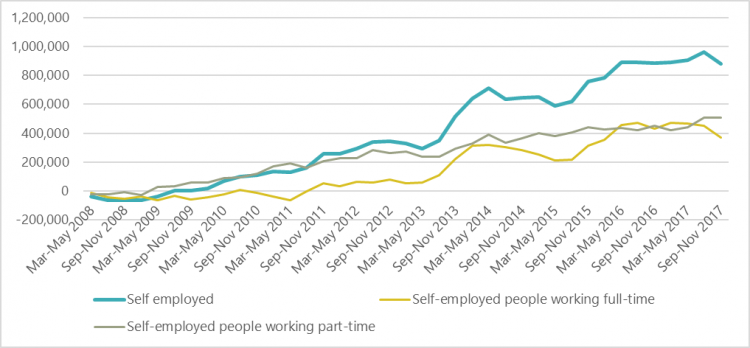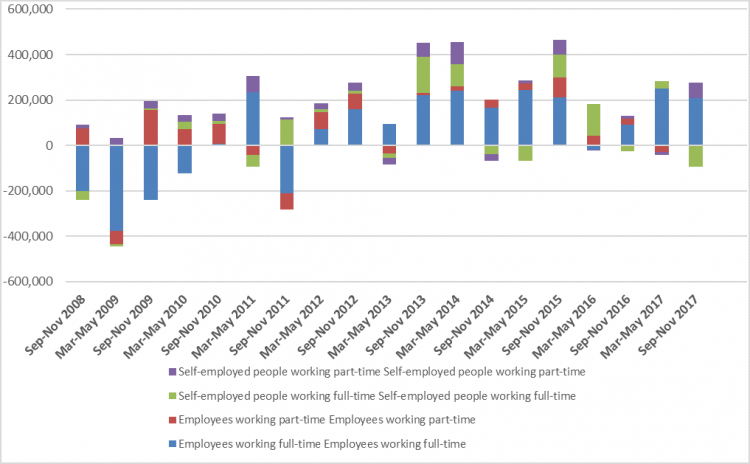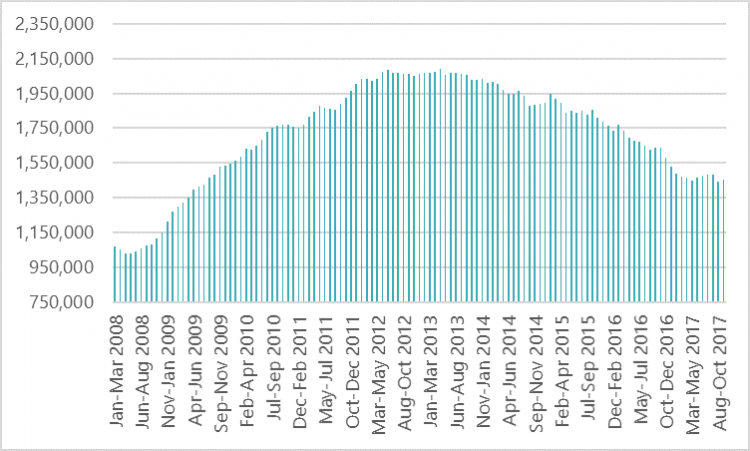Are we seeing the return of the full-time employee?
The latest labour market data released yesterday shows the employment rate is 75.3% and employment increased by 102,000. This is more than accounted for by the rise in the number of full time employee posts.
The unemployment level fell marginally by 3,000, and the unemployment rate is 4.3 %.
However, the unprecedented wage squeeze continues. This is the ninth month in a row real wages have fallen, resulting in falling living standards for workers.
The shift to self- employment
The rapid rise in self – employment is well documented, although it remains a relatively small part of the UK jobs market.
In 2001 there were 3.28m self-employed workers, and by the end of 2007 this had reached 3.82m. After the labour market downturn, however, self-employment accelerated more quickly to reach its current level of 4.8m.
In the early part of the labour market recovery, self-employment along with part-time employment played a significant role in cushioning the overall fall in employment. Full-time employee posts only became a positive contributor to employment growth from 2010, whereas other types of employment expanded throughout the crisis.
Net growth in forms of employment since 2008

Employment breakdown 2008-2017
Some people move into self-employment as a positive choice. But our concern has been that some may have been forced in to self-employment or bogus self-employment as they were unable to find suitable work. Citizens Advice analysis shows that as many as 460,000 people could be ‘bogusly self-employed’.
The latest labour market data shows a significant fall of 82,000 in self- employment. Is this now a change in the direction in the trend in self-employment?
First, it is important to note the fall has been mainly among the full-time self-employed. Over the year part time self-employment has increased by 54,000.
Net Increase in self- employment since 2008

Drill down and it becomes apparent that women are driving the rise in the number of part time self-employed. This is a trend we have previously reported on. The latest data shows since 2008 there has been a 62% increase in self- employed part time women. Our previous analysis showed the most frequent occupation was elementary cleaning occupations, a low paying industry.
Second, we also need to be a bit cautious in saying the growth in full- time employee jobs is now the norm. The data below shows the composition of employment growth can be volatile and it would be wrong to suggest at this stage the rise in self-employment is over.
Contribution change in employment from previous six months

And the share of full time employees as a proportion of all in employment still remains well below pre-recession levels. Achieving the equivalent share today would require around an additional 500,000 full time employee jobs. Involuntary temporary and part-time work both remain above pre- recession levels.
Involuntary work index (part-time and temporary)

Also, while it is good news that we are seeing more full-time employment we are still a long way off from delivering the jobs people want and need.
Stay Updated
Want to hear about our latest news and blogs?
Sign up now to get it straight to your inbox
